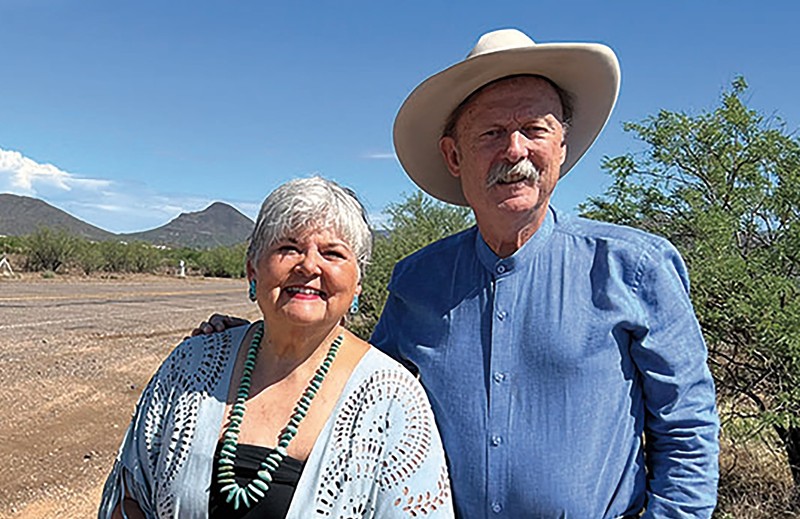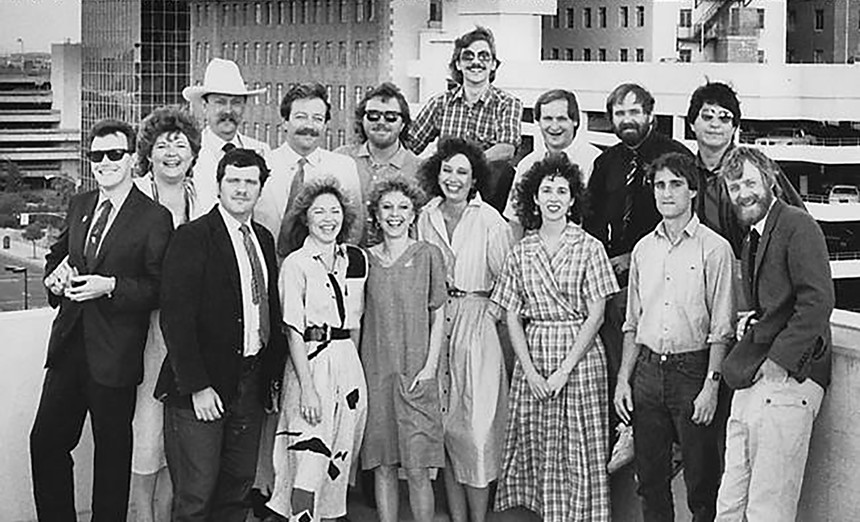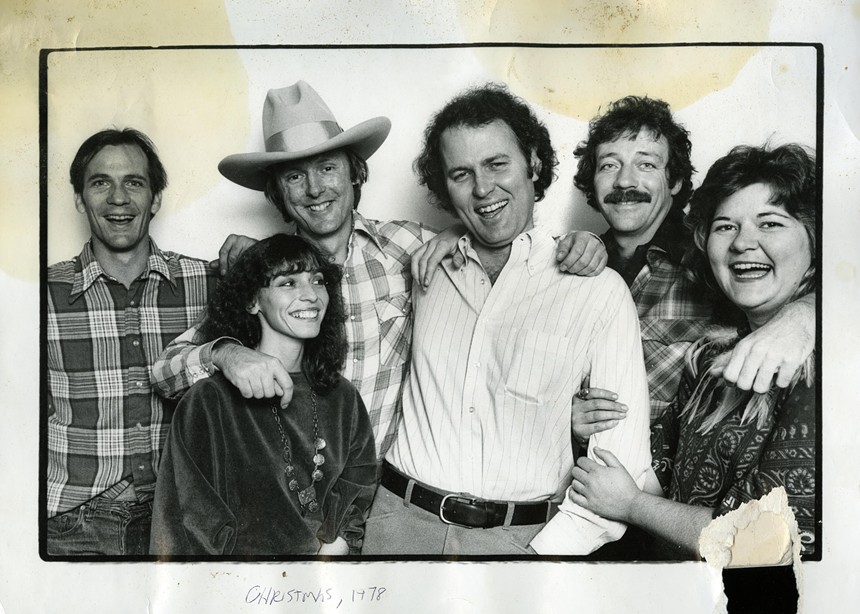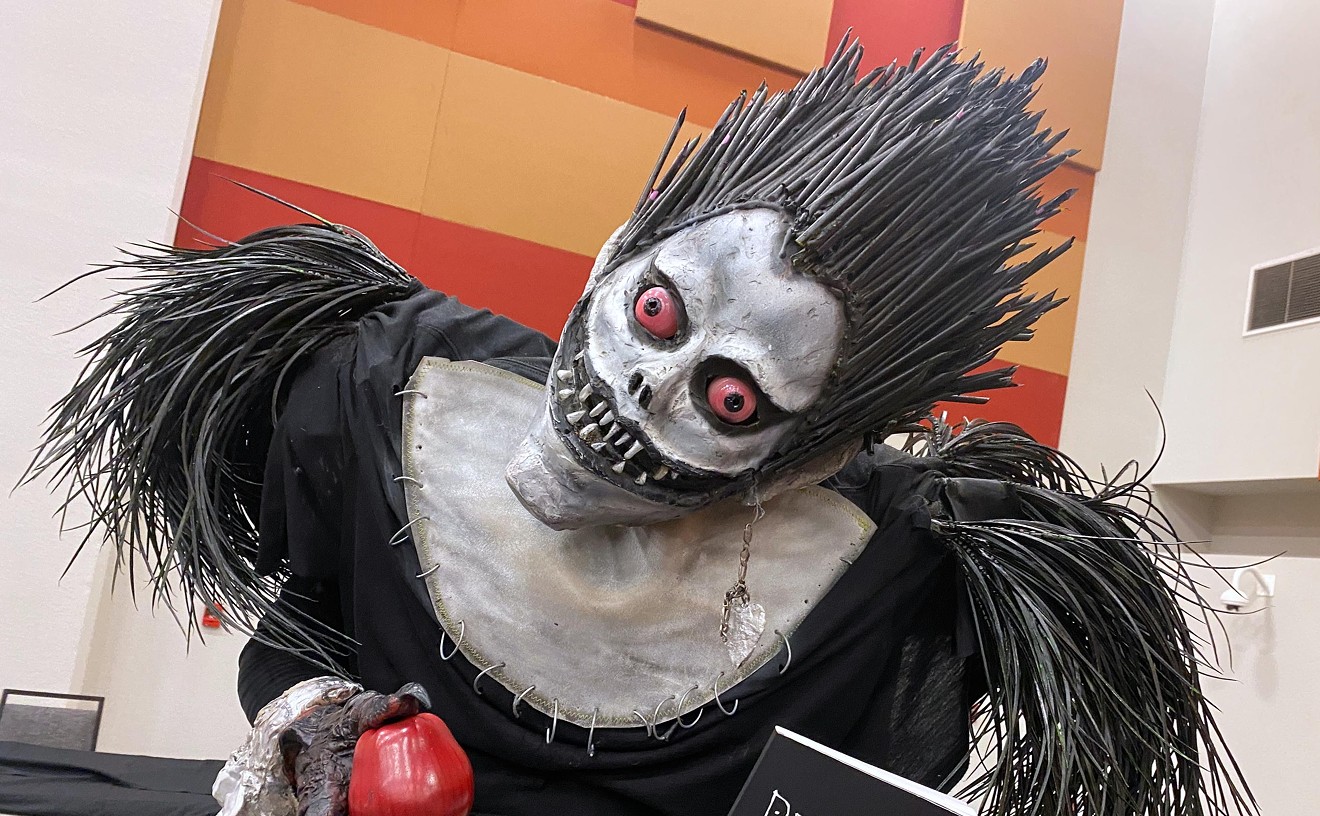Bob Boze Bell remembers the first time he met Jana Bommersbach.
“This was 1978, when everyone at (Phoenix) New Times was working out of the second floor of the San Carlos Hotel,” he says. “We had this little makeshift office that was kind of a converted hotel room. It was very jerry-rigged and seedy and wonderful.”
Bommersbach, a legend in Phoenix journalism, died Wednesday at the age of 78.
Bell, then the madcap cartoonist-in-residence at the fledgling alt-weekly, had heard rumblings that Bommersbach — at the time, the star city hall reporter at the Arizona Republic and a past president of the Arizona Press Club — was coming over to New Times.
“The rumor was that she had defected and she was coming over to work with the hippies,” he says, with a laugh. The motley crew, which then consisted of little more than founders Mike Lacey and Jim Larkin and a shoestring staff of free-spirited writers and artists, did their best to look professional when Bommersbach came through the door.
“So Jana sits right next to me and we hit it off immediately,” Bell says, recalling his delight at how naturally the respected newswoman bonded with the revolutionaries. “She was just so feisty and honest.”
Bell, now the editor and publisher of True West Magazine, which he took over in 1999 and promptly hired Bommersbach as a columnist, also remembers the final time he worked with his friend. It was just last year, when the two spent a few weeks traveling the state to promote the 2022 book they had done together, “Hellraisers and Trailblazers — The Real Women of the Wild West.”
“It was a pretty bumpy ride trying to put the book together, because we’re both real bone-headed Midwesterners,” he says, laughing again. “So we were at this book signing at Cattle Track in Scottsdale, and somebody asked, ‘Are you gonna do anything together again?’ And Jana, in her shy way, says, ‘I will never, ever do another book with Bob!’”
He cracked up at the time, but just a few hours after learning of Bommersbach’s passing, he fights back tears. As happened so often in her storied career, Bommersbach’s instincts were once again exactly right.
Those who worked with Bommersbach at New Times in the ’80s (including me) remember her as the fiery pro who immediately classed up the joint.
“She did a lot to really establish New Times as a paper with hard news credentials,” says Andy Van De Voorde, who came on board as a music editor in 1983 and left in ’89 for Denver, where he wound up working as executive associate editor for New Times' parent company, Voice Media Group, until retiring in summer 2023. “She came in as a very good hard news reporter, and she was taken seriously by people at other media organizations at a time when it was very popular to piss on New Times, you know, just to pretend it didn’t exist. Jana wrote stories that made it impossible for people to continue to pretend that New Times wasn’t a force to be reckoned with.”
Sometimes her work ethic and tenacity could be intimidating to the other writers.
“At New Times, we had a copy meeting every Monday to go over the upcoming issue and story ideas for future publications,” recalls Terry Greene Sterling, who worked as a New Times staff writer from 1986 to 2000 before leaving to become an independent journalist, author and teacher.
“Mike Lacey would sometimes berate lazy writers with weak story ideas and use Jana as an example of how to get out in the community and find stories that no one else had. She was always working her sources. On the phone. At lunch. At parties.”
After she was named journalist of the year by the Arizona Press Club in 1983, the city’s literati began paying attention to the other writers on the New Times staff. Personally, my fondest memory of Jana happened at an Arizona Press Club award ceremony in 1985, where I had just won my first accolade for music criticism during a year when the paper took home a record 24 awards, more than any other newspaper in Arizona.
Celebrating the paper’s streak at the after-awards bash, Jana — who, at the time, I hadn’t formally met — reached out her hand and dragged me onto the dance floor, which to me felt like being bestowed a royal honor: the unseasoned rock critic knighted by the investigative queen. It was a validation, a warm welcoming into the fold I’ve stayed in for four decades, largely because of that small gesture. Of course for Jana, it was probably just an excuse to get down to The Go-Go's.
“I totally relate. She was so encouraging that way,” says Dave Walker, who penned wildly comedic pieces for New Times under the moniker Cap’n Dave. “You know, I did this goofball stuff, and she was one of the people who encouraged me to, well, not be a goofball.”
Walker now lives in New Orleans, where he writes for the Times-Picayune and has become a communications specialist and noted historian for the city’s museums.
“Jana was at the forefront among the people who basically gave me a life in journalism,” he says. “I had not really written before then, so I’ll always remember her for being so encouraging.”
Walker also remembers Bommersbach’s spirited parties, particularly her renowned Christmas celebrations, which she hosted for the children of her friends.
“It became this annual thing for all of our journalist friends who were starting to procreate,” Walker says. “And Santa would give out presents, and Jana would play the piano and lead everyone in carols.”
At one holiday party, Walker met Winnie Ruth Judd, the notorious “Trunk Murderess” convicted of killing two Phoenix women in the 1930s, then transporting their bodies from Phoenix to L.A. in luggage stashed on a train. Judd’s death sentence was later repealed after she was found mentally incompetent, and she spent the next three decades in and out of the Arizona State Hospital, which she finally escaped for good in the ’60s.
Bommersbach reexamined Judd’s case for a series of articles in New Times and a 1992 book, eventually presenting evidence that suggested Judd was innocent — and taking aim at the sensationalized news coverage that biased the prosecution.
“Strange guest to have at a Christmas party, but that’s kind of the way Jana was,” Walker says. “That shows how she intersected different eras, and knew about everybody who played a part in the city’s history.”
Bell admired her passion for Arizona history, too, a trait that bonded them early on.
“She was such a strong commentator on Arizona politics and culture, and that’s what I’m going to miss the most,” he says.
In 2018, Bommersbach aimed that critical eye at New Times itself, when she published her bestseller “The Dead Girl in the Vacant Lot.” It was a “true fiction” take on the Backpage case that dramatized the sex trafficking story using fictionalized characters — with the exception of Lacey and Larkin, who were called out by name throughout.
“The Mike Lacey and Jim Larkin that I knew were fabulous journalists,” she told PHOENIX magazine following the book’s release. “I say in the epilogue that I wrote this book with a broken heart, and one of the reasons it’s broken is because of these guys — knowing and loving these guys, and then seeing this ugly side of them.”
It further strained their relationship, but as always, Bommersbach was unapologetic and unflinching — even when she accused Lacey of sending her a $5,000 check to squelch it. “I received the $5,000 and donated every cent to the Arizona Coalition to End Sexual & Domestic Violence,” she said. “And I kept writing.”
“It’s too bad things ended that way,” says Walker. “Because she and Mike Lacey were a good team, in that he wanted to raise hell and she did too, but she also always wanted to do it with integrity.”
Sterling, who remained friends with Bommersbach and continued to work with her at other publications, insists she finally softened on her judgment of her former colleagues.
“Despite her disagreements with Lacey and Larkin, Jana was deeply saddened by Larkin’s suicide just days before an upcoming criminal trial in which he, Lacey and several colleagues stood accused of facilitating prostitution and money laundering,” she says. “At that moment, Jana chose to remember only the good parts of their long professional relationship.”
“From my standpoint, she was someone who really helped put New Times on the map,” adds Van De Voorde. “I mean, obviously Lacey did, too — he was the primary driver of all that. But one indication of his good judgment was that he hired her and gave her a lot of freedom to really go after stories. And she certainly did that.”
[
{
"name": "Air - MediumRectangle - Inline Content - Mobile Display Size",
"component": "18478561",
"insertPoint": "2",
"requiredCountToDisplay": "2",
"watchElement": ".fdn-content-body",
"astAdList": [
{
"adType": "rectangle",
"displayTargets": "mobile"
}
]
},{
"name": "Editor Picks",
"component": "16759093",
"insertPoint": "4",
"requiredCountToDisplay": "1",
"watchElement": ".fdn-content-body",
"astAdList": [
{
"adType": "rectangle",
"displayTargets": "desktop|tablet"
},{
"adType": "rectangle",
"displayTargets": "desktop|tablet|mobile"
}
]
},{
"name": "Inline Links",
"component": "17980324",
"insertPoint": "8th",
"startingPoint": 8,
"requiredCountToDisplay": "7",
"maxInsertions": 25
},{
"name": "Air - MediumRectangle - Combo - Inline Content",
"component": "16759092",
"insertPoint": "8th",
"startingPoint": 8,
"requiredCountToDisplay": "7",
"maxInsertions": 25,
"watchElement": ".fdn-content-body",
"astAdList": [
{
"adType": "rectangle",
"displayTargets": "desktop|tablet"
},{
"adType": "rectangle",
"displayTargets": "desktop|tablet|mobile"
}
]
},{
"name": "Inline Links",
"component": "17980324",
"insertPoint": "8th",
"startingPoint": 12,
"requiredCountToDisplay": "11",
"maxInsertions": 24
},{
"name": "Air - Leaderboard Tower - Combo - Inline Content",
"component": "16759094",
"insertPoint": "8th",
"startingPoint": 12,
"requiredCountToDisplay": "11",
"maxInsertions": 24,
"watchElement": ".fdn-content-body",
"astAdList": [
{
"adType": "leaderboardInlineContent",
"displayTargets": "desktop|tablet"
},{
"adType": "tower",
"displayTargets": "mobile"
}
]
}
]













